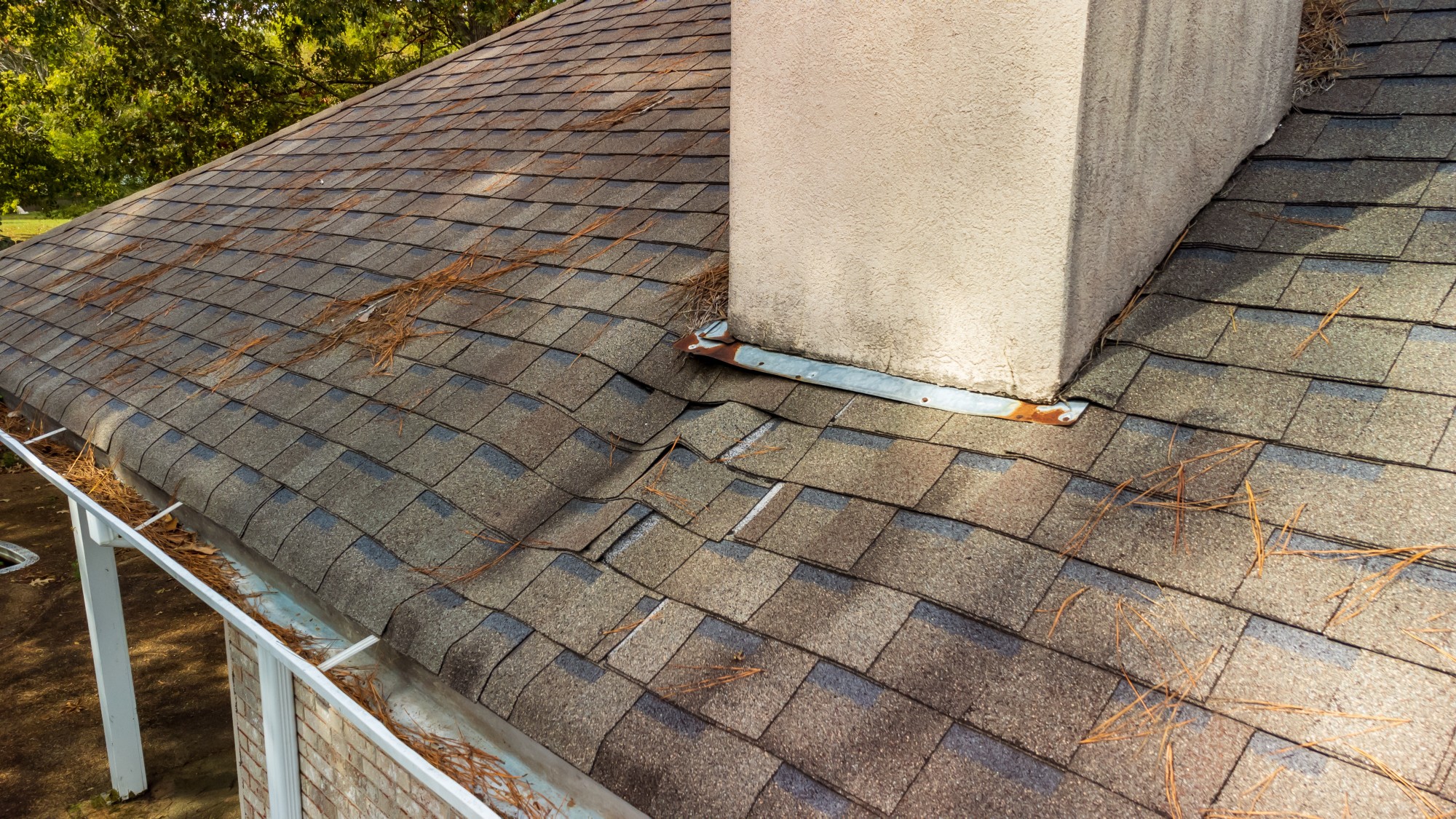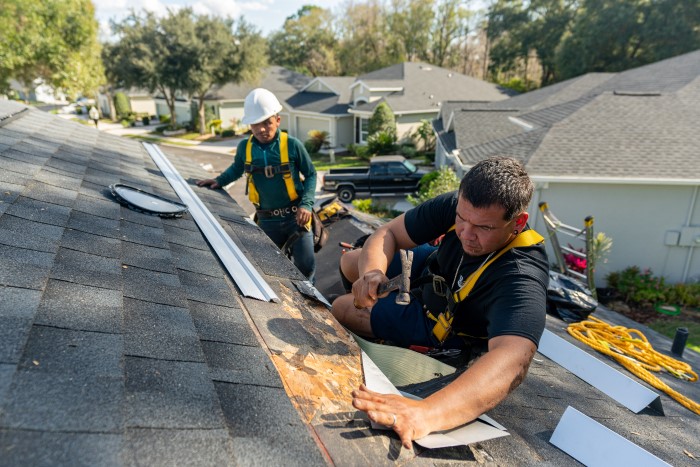Roofers Oahu: Knowledgeable Service Providers for Roof Installations and Repairs
Wiki Article
Comprehending the Various Kinds of Roof Coverings: A Comprehensive Guide for Homeowners
In the world of homeownership, picking the ideal roof covering design is a decision that lugs significant implications for both functionality and aesthetic appeal. With a variety of alternatives-- varying from the standard gable to the modern level-- each kind offers one-of-a-kind benefits and obstacles that need to line up with the house owner's environmental factors to consider and certain requirements. Understanding these differences not only aids in making an informed selection yet likewise affects lasting upkeep and energy effectiveness. As we explore the complexities of various roof covering kinds, it ends up being obvious that a person size does not fit all; the right option might stun you.Saddleback Roof
Saddleback roofs, defined by their triangular shape, are among one of the most preferred roof covering styles due to their simpleness and efficiency in dropping water and snow. This layout includes two sloping sides that meet at a ridge, permitting for efficient water drainage and reducing the danger of water accumulation. The high pitch typically connected with saddleback roofs boosts their capability to manage hefty rainfall, making them suitable for various environments.Along with their useful advantages, saddleback roofs use aesthetic versatility. They can be adapted to numerous building designs, from traditional to modern homes. The style can additionally suit additional features such as dormer windows, which boost natural light and ventilation in the attic area.
In addition, gable roofings give ample space for insulation, adding to power efficiency. Home owners can pick from a variety of roofing products, including asphalt shingles, metal, and ceramic tiles, better improving personalization alternatives.
Regardless of their advantages, gable roof coverings might call for added support in locations vulnerable to high winds or hefty snowfall. On the whole, the saddleback roof remains a preferred option as a result of its mix of functionality, durability, and aesthetic charm.
Flat Roofs
Level roofings are commonly acknowledged for their minimalist design and functional applications, especially in business and industrial setups (oahu roofing). These roofings include a straight or almost horizontal surface, which permits very easy construction and versatile room use. While they may do not have the aesthetic allure of pitched roofs, flat roof coverings offer countless benefits, particularly in urban settings where optimizing room is crucialAmong the primary advantages of flat roofing systems is their ease of access. Homeowners can use the roofing system room for different purposes, such as roof gardens, balconies, or solar panel installments. Furthermore, flat roofings are generally extra affordable to install and keep contrasted to their sloped counterparts, as they require fewer materials and labor.
Nonetheless, flat roofing systems do existing specific challenges. Correct drainage is vital to avoid water pooling, which can bring about leaks and structural damages. Hence, choosing top notch waterproofing products and routine assessments are critical for guaranteeing long life. Usual products used for flat roof coverings consist of built-up roofing (BUR), modified asphalt, and single-ply membranes, each offering distinctive benefits. Generally, level roof coverings offer as a functional and adaptable choice for lots of property owners and organizations alike.
Hip Roofs
Hip roofing systems are identified by their sloped sides that converge at the top, forming a ridge. This layout is distinctive from gable roof coverings, as all 4 sides of a hip roof covering incline downwards toward the walls, providing a much more secure structure. The angle of the slopes can differ, enabling convenience in architectural appearances and performance.One of the key benefits of hip roofs is their ability to hold up against hefty winds and unfavorable weather. The sloped surface areas allow much better water drainage, decreasing the risk of leaks and water damages. Additionally, hip roofs provide enhanced attic room space, which can be used for storage space and even exchanged habitable locations.
Nevertheless, creating a hip roofing can be extra costly and intricate than less complex roof types, such as saddleback roofs. The added product and labor included in creating the slopes and making sure appropriate structural stability can bring about higher costs. Despite these disadvantages, many home owners favor hip roof coverings for their longevity, aesthetic allure, and potential for energy performance.
Mansard Roofing Systems
Mansard roof coverings, typically identified by their unique four-sided style, feature two inclines on each side, with the reduced slope being steeper than the upper. This architectural design, stemming from France in the 17th century, is not just aesthetically appealing however functional, as it takes full advantage of the usable space in the upper floors of a structure. The steep lower slope allows for more clearance, making it a perfect choice for loft spaces or attics, which can be exchanged living spaces.Mansard roofs are identified by their versatility, fitting various building designs, from standard to modern-day. They can be constructed with different materials, including asphalt roof shingles, slate, or steel, providing house owners with an array of alternatives to match their budgets and choices. Furthermore, the style permits the assimilation of dormer windows, boosting natural light and air flow in the top levels.
However, it is important to think about the possible disadvantages. Mansard roofings may require more upkeep as a result of the complexity of their design, and their steep inclines can be testing for snow and rain runoff. In general, mansard roofs combine elegance with usefulness, making them a preferred option among house owners seeking distinctive building functions.
Shed Roofs
As homeowners increasingly seek simplicity over here and functionality in their building designs, lost roofings have become a prominent choice. Characterized by a solitary sloping airplane, a shed roof offers a minimalist aesthetic that enhances numerous home designs, from contemporary to rustic.One of the key advantages of a shed roofing system is its straightforward building, which frequently converts to reduce labor and product costs. This style permits for efficient water drain, decreasing the danger of leakages and water damages. Additionally, the vertical incline provides sufficient area for skylights, boosting natural light within the interior.
Dropped roof coverings also provide convenience in regards to use. They can be effectively integrated into enhancements, garages, or exterior frameworks like sheds and structures. Additionally, this roof design can fit numerous roof covering products, consisting of metal, asphalt shingles, or perhaps eco-friendly roof coverings, straightening with environment-friendly efforts.
Nevertheless, it is necessary to take into consideration local environment problems, as hefty snow tons may require modifications to the roofing's angle or framework. Overall, shed roofs offer a sensible and cosmetically pleasing option for property owners wanting to optimize performance without jeopardizing design.
Verdict


Gable roofs, characterized by their triangular shape, are among the most preferred roof designs due to their simpleness and effectiveness in losing water and snow. oahu roofing. The steep pitch typically connected with gable roofs improves their capability to take care of heavy precipitation, making them appropriate for various climates
While they may do not have the visual allure of pitched roofing systems, level roofings offer many benefits, specifically in urban environments where optimizing area is vital.

Report this wiki page